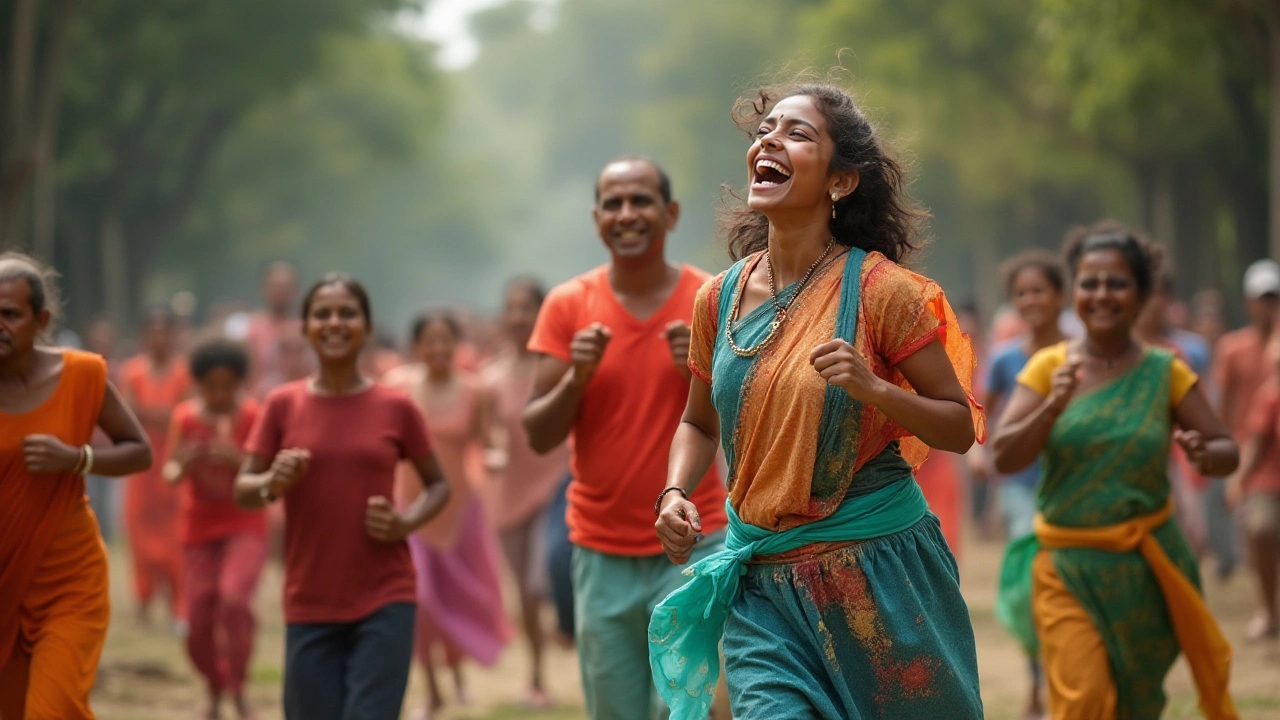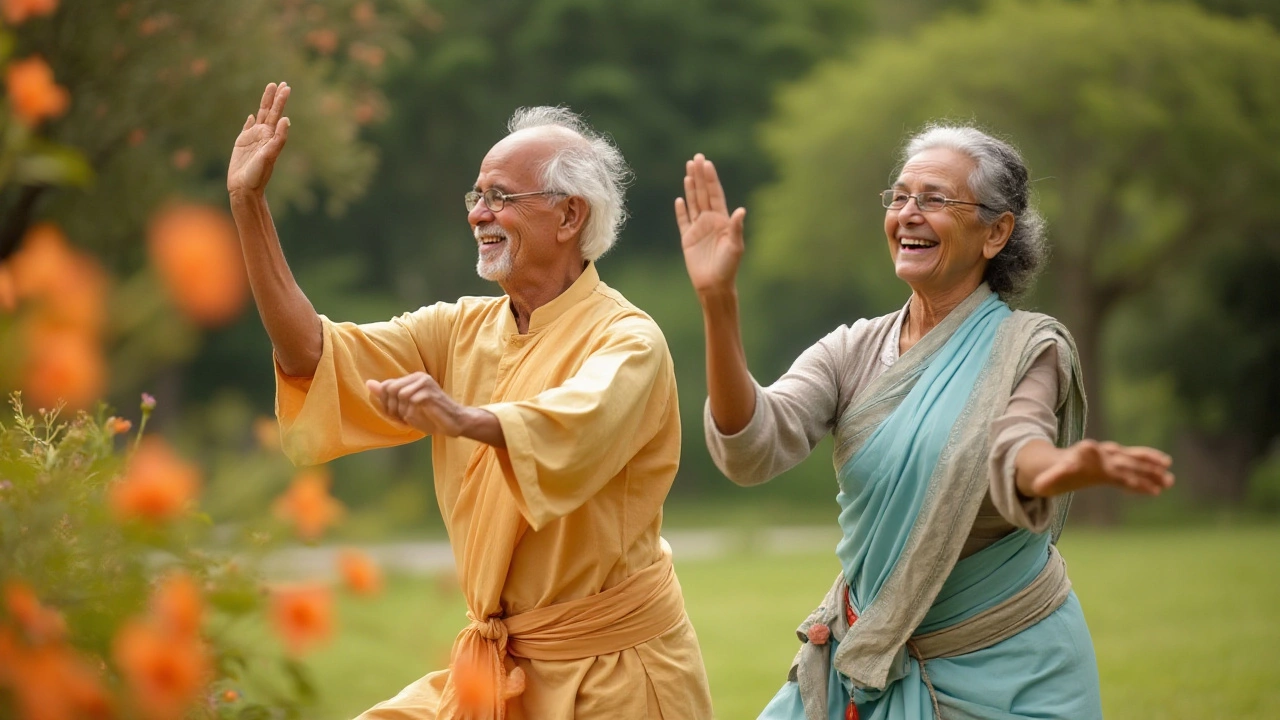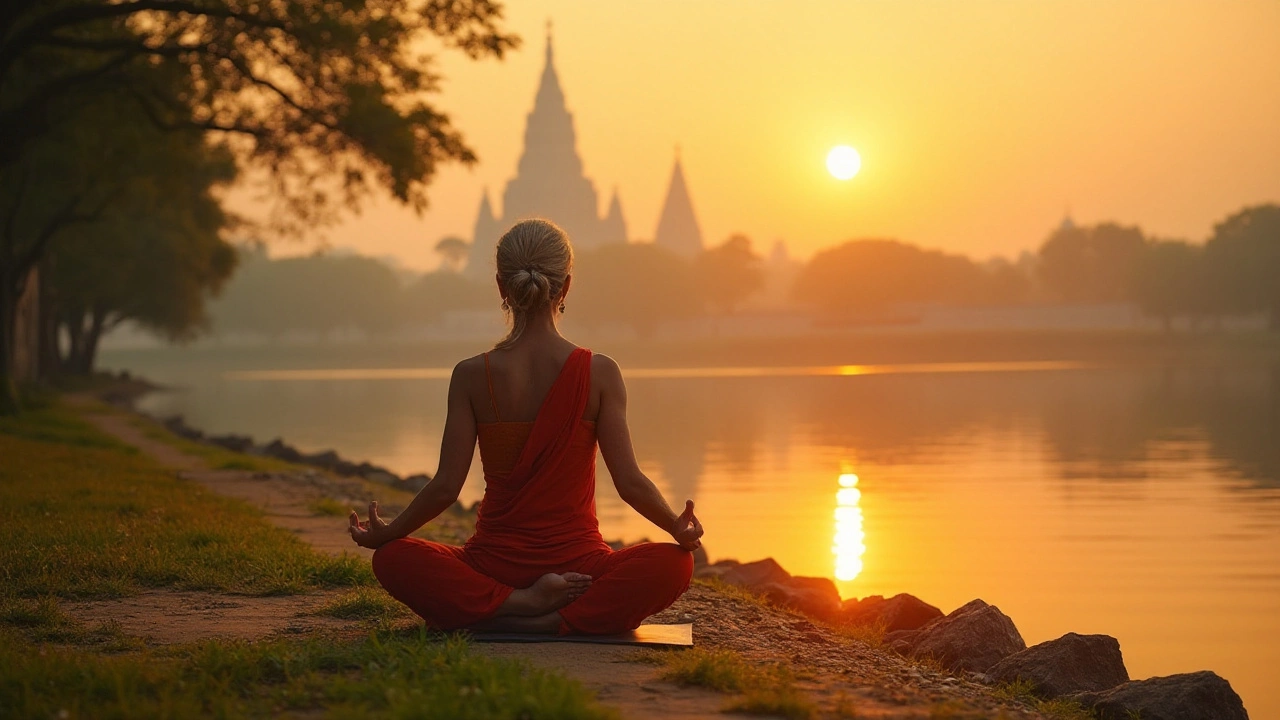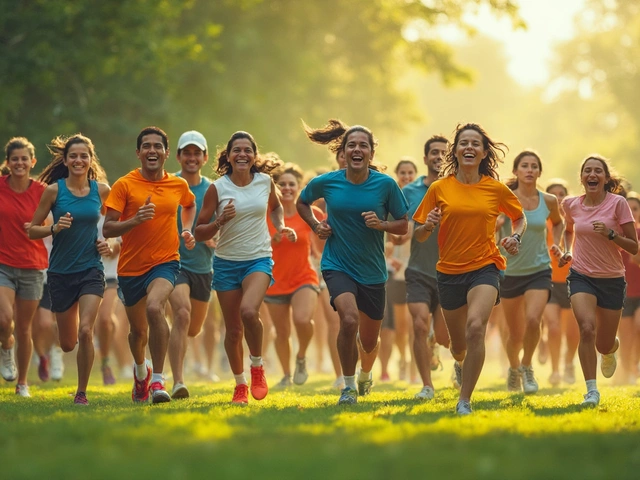In the quest to maintain youthfulness, it's easy to overlook a powerful, time-tested tool—exercise. The right kind of physical activity not only keeps the body fit but also preserves the vigor of youth.
As we dive into the world of fitness, learn about which exercises truly hold the key to turning back the biological clock. From heart-pumping cardiovascular routines to strength training that fortifies your body, discover ways to embrace a more youthful life.
Find out how consistency and a balanced approach can make your everyday movements feel lighter and your future look more promising. No potions or magic needed, just the natural power within movement.
- The Science Behind Aging and Exercise
- Cardiovascular Workouts for Longevity
- Strength Training: Building a Youthful Foundation
- The Role of Flexibility and Balance
- The Importance of Consistency
- Crafting a Personal Anti-Aging Workout Plan
The Science Behind Aging and Exercise
As we journey through life, our bodies inevitably undergo changes. From minor wrinkles that tell tales of our experiences to more significant shifts like joint stiffness, the effects of aging are undeniable. However, modern research consistently backs the powerful role exercise plays in influencing these changes. The aging process is driven by multiple factors - cellular damage, oxidative stress, inflammation, and the natural shortening of DNA telomeres. Regular anti-aging exercise can mitigate these factors, encouraging our bodies to maintain youthfulness longer.
A fascinating study from the Mayo Clinic revealed that high-intensity interval training (HIIT) can reverse some cellular aspects of aging. Researchers observed improvements in mitochondrial function, VO2 max, and even muscle mass in older adults. These findings shed light on how different exercise routines not only help maintain physical performance but can help you feel younger too. In fact, Dr. Michael Joyner, a researcher involved, states,
"Exercise training provides a bigger boost to most of these factors than any medicine currently on the market."
The benefits of fitness tips and activities such as strength training cannot be ignored as well. Weight-bearing exercises are known to stimulate bone density, reducing the risks of osteoporosis that typically accompany aging. They also encourage muscle hypertrophy and combat the natural muscle loss known as sarcopenia. All this points to one clear reality: with the right approach, the biological clock can tick a little slower. Understanding this science isn't just empowering—it's a reminder that while we can't fully escape aging, we can certainly influence its pace.
Meanwhile, flexibility exercises ensure the ligaments and tendons retain their elasticity, reducing injury risks. Antioxidant-rich blood flow, stimulated by exercises like yoga and pilates, helps reduce oxidative stress, one of aging's primary accelerants. Additionally, Harvard Medical School health experts emphasize how critical regular, moderate cardiovascular workouts are for maintaining a healthy heart, crucial as one matures through the years. The challenge is often finding the right balance between these activities, but, undeniably, there's a routine for everyone, with benefits stretching beyond physical appearance, fostering mental health, and enhancing the quality of life overall.
Cardiovascular Workouts for Longevity
In the realm of fitness, cardiovascular workouts are often celebrated for their role in maintaining a youthful heart and body. These activities, from running to swimming, elevate the heart rate, improve circulation, and increase lung capacity. The key to unlocking their anti-aging potential lies not just in the activity chosen but in the consistency of practice. Research shows that integrating moderate aerobic exercise into your weekly routine can significantly lower the risk of age-related diseases and enhance overall longevity.
One compelling aspect of aerobic exercise is its profound impact on cardiovascular health. Regular participation can lead to a decrease in blood pressure, as the heart becomes more efficient in pumping blood. Additionally, by boosting the levels of HDL cholesterol, the good kind, it's possible to reduce arterial plaque buildup. This improvement in heart health is essential for sustaining energy and vitality as we age.
The wide array of cardiovascular activities available offers something for everyone, catering to different preferences and fitness levels. For those who enjoy the simplicity of stepping out the door and hitting the pavement, running provides a straightforward and effective option. Not only does it strengthen the lower body, but it also triggers the release of endorphins, the body's natural mood lifters. Swimming, on the other hand, offers a full-body workout with minimal impact on the joints, making it a perfect choice for those seeking a low-impact alternative.
The Importance of Intensity and Variety
Finding the right balance between intensity and variation can unlock the true anti-aging benefits of cardiovascular workouts. High-Intensity Interval Training (HIIT), for example, allows individuals to experience the perks of a more demanding workout in a shorter timeframe. By alternating between intense bursts of activity and periods of rest, HIIT can improve metabolic rate and burn fat more effectively than steady-state cardio.
Incorporating different forms of cardiovascular activities into your routine is also key. This not only prevents boredom but challenges various muscle groups and keeps the body adapting. One week you might focus on cycling, while the next, you could try a dance class. Keeping the activity fresh and exciting encourages adherence, making it easier to create a lasting habit.
"Exercise not only changes your body, it changes your mind, your attitude, and your mood." — Anonymous
Busting Myths with Science
There are misconceptions that emerge regarding the aging body and cardio exercise. Some believe it's only for the young and fit, mistakenly avoiding it due to fears of injury or exhaustion. In reality, studies have shown that age-appropriate cardiovascular workouts can actually enhance muscle strength and balance, reducing fall risk among older adults. Engaging in this form of exercise can keep the mind sharp, as it stimulates the release of proteins that improve connections between neurons.
A remarkable study published in the "Journal of the American Heart Association" found that older adults who participated in regular aerobic exercises exhibited improved brain function and memory retention. The surge of blood flow from these workouts nourishes the brain, providing essential nutrients and oxygen that support cognitive health.
Conclusion and Recommendations
Begin with an achievable goal, such as three cardiovascular sessions per week, each lasting 20-30 minutes. Evaluate how your body responds and adjust the duration and intensity accordingly. Remember that the journey to longevity through cardiovascular workouts is highly personal and flexible, aiming to provide not just more years to your life, but more life to your years.

Strength Training: Building a Youthful Foundation
Strength training stands as a formidable ally in the battle against aging. When you lift weights or engage in resistance exercises, you're not only sculpting your muscles; you're paving the way to sustain a youthful existence. This type of workout enhances muscle mass and bone density, conditions that naturally decline with age. By engaging in strength training, individuals can maintain and even regain some of their muscular vigor and skeletal robustness, which are essential for a resilient life.
One essential aspect of such training lies in its ability to elevate metabolism. As muscle tissue demands more energy than fat, increasing muscle mass boosts calorie burning, even at rest. This metabolic uptick helps in maintaining a healthy weight, which is closely tied to longevity. Beyond physical aesthetics and weight management, this kind of exercise propels the body's biochemical responses, fighting against the aging markers at a cellular level.
The Science-Backed Benefits
Research consistently supports the role of strength training in slowing down cellular aging. For instance, strength training has been shown to improve insulin sensitivity, boost brain health by promoting the release of growth factors, and bolster the body's immune response. In a landmark study, the Journal of Applied Physiology revealed that resistance training improved cellular efficiency by invigorating the mitochondria, which are known as the powerhouses of the cells. This revelation underscores how physical activity contributes to sustaining youth and preventing age-related decline."Strength training not only strengthens muscles and bones, it strengthens confidence," says Dr. William Kraemer, a renowned exercise scientist. "It's an indispensable tool for anyone looking to live a longer, more vital life."
Getting Started with a Routine
Embarking on a strength training journey is less daunting than it may seem. It's important to devise a regimen that’s both achievable and progressive. For beginners, starting with bodyweight exercises like squats, push-ups, and planks lays a solid groundwork. As proficiency grows, incorporating free weights or resistance bands can provide the added challenge necessary for continued muscle growth.To optimize results, it's advisable to engage in strength workouts at least two to three times a week. Each session should focus on different muscle groups to allow adequate recovery time. If alone, consulting with a fitness coach can ensure proper form and alignment. These precautions not only prevent injury but ensure the efficacy of each movement.
A well-rounded workout plan balances longevity workout with other forms of exercise like cardiovascular activities and flexibility routines. Such a holistic approach harnesses the entire body's potential to fend off aging, ensuring that muscles remain robust, flexible, and ready to tackle life's challenges with youthful zeal.
The Role of Flexibility and Balance
Flexibility and balance play vital roles in maintaining not just an active lifestyle, but also in the graceful aging process. As we age, our muscles and tendons tend to lose elasticity, while joints may become stiffer, making daily activities more challenging. Regularly incorporating exercises that improve flexibility and balance is essential to reducing the risk of falls and injuries, which can have a significant impact on our quality of life. This decrease in flexibility can often lead to greater pain and discomfort, making it imperative to engage in routines that encourage a broader range of motion.
An effective routine might include yoga or tai chi, which are gentle but powerful practices that enhance flexibility and balance. These exercises don't just benefit the body; they engage the mind as well, promoting mental clarity and peace. Strengthening these attributes can lead to improvements in posture, a reduction in joint pain, and better coordination. A study published in the Journal of Aging and Physical Activity found that older adults who practiced tai chi regularly improved their balance and reduced the risk of falls by about 50%.
"Consistent practice of exercises that target flexibility and balance can significantly lower the chances of falls in seniors. It's not just about stretching or balance, but improving the overall agility and confidence in movement," states Dr. Jonathan Myers, a specialist in kinesiology.
Improving flexibility and balance is not about grand gestures; it's about small, consistent efforts. Incorporating simple stretches, balance exercises, and core strengthening into daily routines can yield substantial benefits over time. For instance, consider beginning each day with a series of stretches to wake up the muscles and prepare the body for the stresses of the day. Improved balance aids in maintaining a sense of independence, allowing individuals to confidently engage in everyday activities without fear of instability.
| Exercise | Benefit |
|---|---|
| Yoga | Improves flexibility, promotes relaxation |
| Tai Chi | Enhances balance, reduces fall risk |
| Pilates | Strengthens core, improves posture |
In the context of anti-aging exercise, it's clear that flexibility and balance are crucial. The ability to perform functional movements with ease can delay signs of aging dramatically, keeping the physical manifestations of age at bay. Consistency in practice not only keeps the body nimble but also supports the mind in maintaining a sharper focus. This interconnectedness of body and mind underscores the broader benefits of exercising for flexibility and balance, making such practices an indispensable component of any well-rounded fitness regime aimed at longevity.

The Importance of Consistency
When it comes to transforming your fitness journey into a shield against aging, consistency is everything. Imagine your body as a finely tuned machine, which operates best when maintained regularly. Just like a classic car that needs regular oil checks and polishing, your body thrives on a routine that is unwavering and reliable. Consistent exercise keeps the engines of your metabolism running smoothly, serving as a bulwark against the creep of age-related decline. It's not just about doing the same workout day in and day out, but about cultivating a habit that your body can rely on, day after day, week after week. A consistent regimen helps the body adapt better, recover faster, and build endurance needed to sustain vitality throughout the years. In fact, studies show that people who maintain a regular exercise schedule generally report higher energy levels and better health markers as they age.
Perhaps the greatest impact of consistency boils down to the mental game. Regular exercise routines foster discipline, which is often required to push through the occasional mental slump or physical fatigue. This discipline translates into other areas of life, promoting a healthier lifestyle overall. A research article published in the Journal of Aging and Physical Activity notes that individuals maintaining consistent exercise routines often express increased confidence in their physical abilities and a heightened sense of control over their health, contributing significantly to mental well-being. Contributing to psychological health is as crucial as physical prowess when it comes to aging gracefully; the confidence and self-esteem built over months and years can often be the best anecdote to stress-induced aging.
"It's not what we do once in a while that shapes our lives, but what we do consistently." - Tony Robbins
Moreover, consistent exercise helps in regulating hormones that are directly linked to aging. Regular movement induces the production of endorphins, often dubbed as 'happy hormones,' which elevate mood and keep stress at bay. Chronically elevated stress hormone levels are known to accelerate aging, which makes keeping them in check a vital part of any anti-aging exercise strategy. Consistency in workouts results in better hormonal balance, which translates into healthier skin, optimal weight management, and better sleep—all of which are essential in the sphere of anti-aging. In tandem, these factors create a positive feedback loop where each benefit enhances the effectiveness of the other, setting the pace for a youthful lifestyle.
Keeping Consistency Exciting
To sustain consistency, it's crucial to keep the exercise routine engaging and varied. Sticking to a repetitive plan can lead to burnout over time, so introducing variety is a game-changer. Switching between different types of exercises — such as combining strength training with cardio and flexibility workouts — keeps your mind engaged and your body balanced. This diversity is also critical from a physiological standpoint; different exercises target different muscle groups and energy systems. Such variety ensures that no part of your body is left unchallenged, ultimately allowing for more balanced growth and a more comprehensive approach to anti-aging. Many fitness experts recommend changing your routine every 4 to 6 weeks to keep things fresh and challenging.
Recognize and celebrate the small milestones, too. Consistency is a marathon, not a sprint, and maintaining it can be difficult. It's important to acknowledge the little victories along the way, as they can serve as powerful motivation moving forward. Whether it's lifting a heavier weight, running a longer distance, or simply feeling more energetic throughout the day, each step is a testament to the dedication and effort you've invested. Regular review and adjustment of your routine also play a key role in staying consistent. By focusing on what works for you and pivoting as necessary, you not only stay on the path but also reinforce a proactive approach to anti-aging and longevity.
Crafting a Personal Anti-Aging Workout Plan
Designing an effective anti-aging fitness regimen involves blending various types of exercise to target different aspects of physical wellness. Each component plays a vital role in fostering vitality, reducing the biological impacts of aging, and promoting longevity. A well-rounded plan should incorporate cardiovascular workouts to enhance heart health, strength training for muscle preservation, and flexibility exercises to maintain agility and balance. Studies show that individuals who engage in consistent physical activity exhibit lower age-related decline, which underscores the importance of creating a personalized plan that suits your current fitness level and lifestyle.
Begin by assessing your current physical state—understand your strengths and identify areas that need improvement. Many fitness professionals recommend starting with cardiovascular exercises like brisk walking, jogging, or cycling at least three to five times a week. The American Heart Association suggests a minimum of 150 minutes of moderate aerobic activity per week for substantial health benefits. With advancements in fitness technology, tools like heart rate monitors and fitness apps can provide insights and help tailor sessions that match your goals. Consistency is key, but ensure to incorporate variety to keep the regimen engaging.
Next, incorporate strength training exercises to maintain and even increase muscle mass. As we age, muscle mass naturally tends to decrease, contributing to a decline in metabolism. However, regular strength training can combat this loss. Aim to work each major muscle group—legs, arms, abdomen, back—twice a week using techniques such as resistance bands, free weights, or bodyweight exercises like push-ups and squats. Consider a method called 'progressive overload,' where the weight or resistance used is gradually increased, promoting better muscle adaptation and growth. It's not just about having a lean physique; it's about supporting your body's overall function and mobility as you age.
Flexibility and balance exercises are often overlooked but are crucial in an anti-aging exercise plan. They help prevent injuries and enhance the ease of daily movements. Activities like yoga and Pilates can improve flexibility and strengthen core muscles, which are key for maintaining a healthy posture. These exercises not only support physical health but enhance mental well-being by reducing stress and promoting relaxation. Integrating exercises that focus on stability, such as balance boards or one-legged stands, can improve coordination and reduce the risk of falls, common in later years.
Creating a personal workout schedule requires commitment and consideration. Track progress regularly and adjust the plan based on your body's responses and evolving fitness aspirations. Periodically reviewing and modifying your exercise regimen ensures continued interest and effectiveness.
"Every minute you spend exercising adds a minute to your life," says Dr. Michael Joyner, a physician-scientist at the Mayo Clinic. This mantra highlights the profound impact regular exercise has on longevity and quality of life.
So, pen down that personal workout diary and make every session a step towards preserving your youth. Remember, it’s about enhancing your quality of life, regardless of age. Crafting the right plan requires patience and perseverance, but the rewards—feeling younger, energetic, and vibrant—are undeniably worth it.


